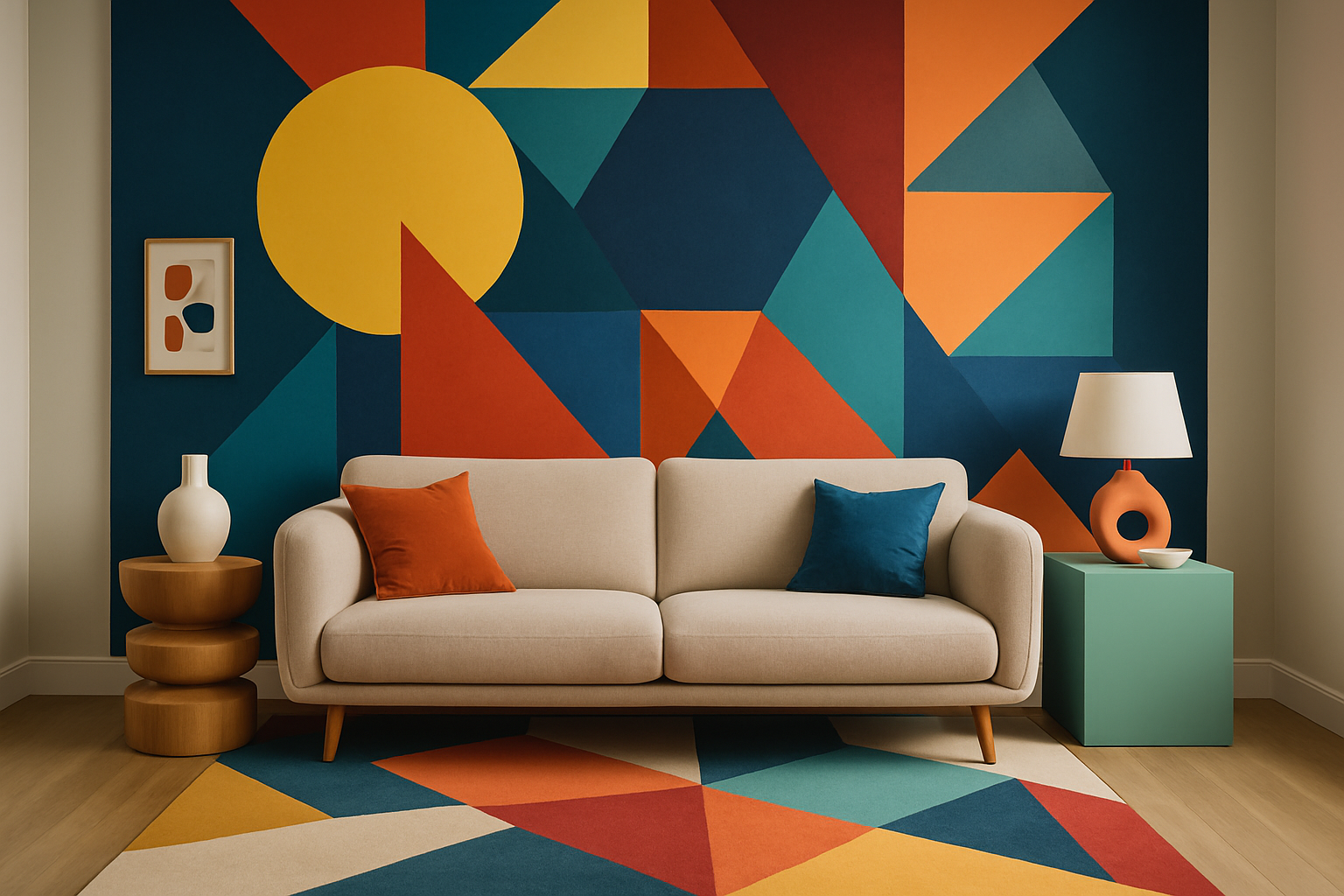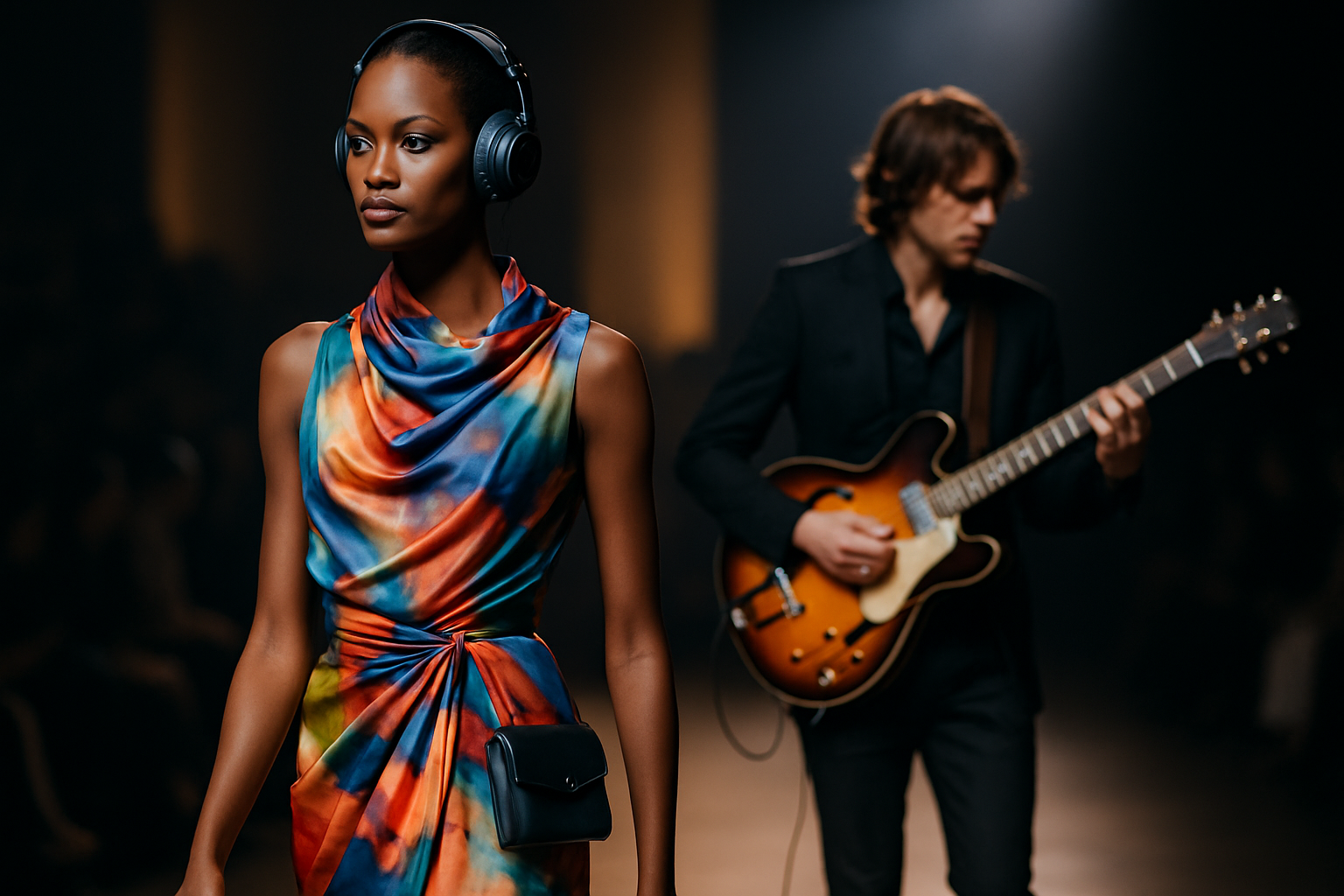Chromatic Geometry: The Bold New Frontier in Home Decor
Imagine stepping into a living room where vibrant triangles dance across the walls, hexagonal shelves house treasured objects, and a circular rug anchors the space with its perfect symmetry. This isn't a scene from a futuristic movie set—it's the latest trend taking the interior design world by storm: Chromatic Geometry. This fresh approach marries the clean lines of geometric shapes with a fearless use of color, creating spaces that are both visually striking and surprisingly harmonious.

Historical Roots and Modern Evolution
While the use of geometry in design is as old as architecture itself, the specific combination of bold colors and geometric forms has its roots in the early 20th century art movements. The De Stijl group, led by Piet Mondrian, explored the use of primary colors and straight lines to create abstract compositions. This influence can be seen in the way Chromatic Geometry incorporates color blocking and angular shapes into interior spaces.
In the 1980s, the Memphis Group brought a playful, postmodern approach to geometry and color, challenging the austere minimalism that had become prevalent. Today’s Chromatic Geometry builds on these foundations, but with a more refined and intentional approach that balances impact with livability.
Key Elements of Chromatic Geometry
At its core, Chromatic Geometry relies on the interplay between shape and color. Designers are using bold, saturated hues in unexpected combinations, often paired with neutral backgrounds to prevent visual overload. Geometric patterns appear on everything from wallpaper and textiles to furniture and light fixtures.
One of the defining features of this trend is the use of color to delineate space. For example, a bright yellow triangle painted on a wall might serve as a visual anchor for a reading nook, while a series of blue rectangles could guide the eye along a hallway. This technique not only adds visual interest but also helps to define the function of different areas within an open-plan space.
Incorporating Chromatic Geometry in Your Home
For those looking to embrace this trend, there are several ways to introduce Chromatic Geometry into your living space:
-
Start small with geometric-patterned throw pillows or a statement rug featuring bold shapes and colors.
-
Create a focal point with a large-scale geometric mural or wallpaper on one wall.
-
Invest in furniture pieces that incorporate geometric elements, such as a hexagonal coffee table or a chair with a triangular backrest.
-
Use color-blocking techniques to paint geometric shapes on walls or doors.
-
Accessorize with objects that echo the geometric theme, like sculptural vases or abstract art prints.
The Psychology of Shape and Color
The appeal of Chromatic Geometry goes beyond mere aesthetics. Research has shown that different shapes and colors can have distinct psychological effects on individuals. Circles, for instance, are associated with harmony and protection, while triangles can evoke a sense of energy and direction. When it comes to color, warm hues like red and orange can stimulate conversation and appetite, making them ideal for dining areas, while cooler tones like blue and green promote relaxation and are well-suited for bedrooms.
By thoughtfully combining these elements, designers can create spaces that not only look striking but also positively influence mood and behavior. This makes Chromatic Geometry more than just a visual trend—it’s a tool for enhancing the way we experience our living environments.
Balancing Bold Design with Practical Living
While the allure of Chromatic Geometry lies in its visual impact, it’s important to strike a balance between bold design and practical living. Too much pattern or color can be overwhelming and difficult to live with long-term. Designers recommend using the 60-30-10 rule: 60% of the space should be a dominant color (often a neutral), 30% a secondary color, and 10% an accent color.
Another key consideration is the longevity of the design. While it’s tempting to go all-in on a trend, it’s wise to consider how the space will evolve over time. Incorporating Chromatic Geometry through easily changeable elements like paint, textiles, and accessories allows for greater flexibility as tastes change.
Sustainability and Chromatic Geometry
Interestingly, the Chromatic Geometry trend aligns well with sustainable design principles. By focusing on bold colors and shapes, this style can create high-impact spaces without relying on excessive consumption of materials. Additionally, the emphasis on geometric forms lends itself well to modular furniture design, which can be more sustainable as it allows for easier repair and replacement of individual components.
Some designers are taking this a step further by using eco-friendly paints and sustainably sourced materials to create their geometric masterpieces. This demonstrates that cutting-edge design and environmental consciousness can go hand in hand.
The Future of Chromatic Geometry
As with any design trend, Chromatic Geometry will continue to evolve. We’re already seeing designers experiment with more complex geometric forms and unexpected color combinations. There’s also a growing interest in incorporating technology into these designs, such as programmable LED lighting that can change the color scheme of a room at the touch of a button.
Looking ahead, we can expect to see Chromatic Geometry influencing not just interior spaces but also architecture and urban design. Imagine cityscapes where buildings are no longer just functional structures but massive canvases for geometric art, transforming our urban environments into vibrant, energizing spaces.
In conclusion, Chromatic Geometry represents a exciting new direction in home decor, offering a way to create spaces that are both visually striking and emotionally resonant. By thoughtfully combining bold shapes and colors, homeowners and designers can craft environments that are not just beautiful, but also enhance our daily lives. As this trend continues to gain momentum, it’s clear that the future of interior design is bright, bold, and beautifully geometric.





